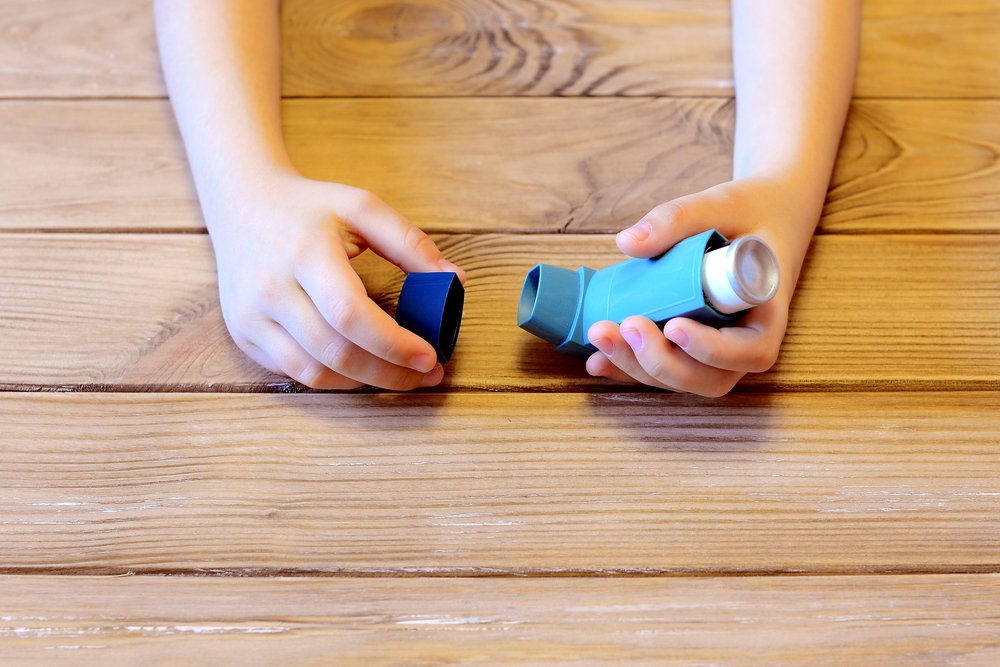
Asthma is one of the most common chronic diseases in the U.S., with a prevalence of 15.2 percent. The condition is manageable when treatment is appropriately prescribed, adjusted, and accessed by the patient. However, uncontrolled asthma can impair various facets of life and may even be fatal. This dichotomy is noteworthy, especially when considering how strongly asthma outcomes correlate with other elements of an individual’s social identity. A child’s residence, socioeconomic status, and access to transportation can play an enormous difference in whether they live a normal life or one that is plagued by asthma attacks and ER visits.
The impact of these social determinants on asthmatic children in Southeast DC has been demonstrated through several reports. According to the 2018 Health Equity Report on the District of Columbia, Wards 7 and 8 in the District suffer from greater disparities in health care outcomes compared to other wards. IMPACT DC Asthma Clinic notes that pediatric asthma-associated emergency department visits significantly increased for Wards 7 and 8 in 2014. Not surprisingly, these two wards are associated with the highest rates of poverty in DC.
Over the past decade, social determinants of health have been acknowledged as a critical component of health outcomes. Factors such as employment status, social support, literacy, zip code, and others contribute significantly to health status. Among these, socioeconomic status is a central element that continuously contribute to differences in illness-associated morbidity and mortality. In the context of asthma, low socioeconomic status is associated with worse management of asthma in both adult and pediatric asthmatics. As future physicians, we feel it is important to advocate for an innovative solution to this well-established disparity.
We are interested in the barriers that contribute to these stark differences in asthma management and outcomes. Generally, treatment-related barriers include access to medication, complexity of prescription regimen, and adverse effects. As medical students, we are constantly improving our ability to diagnose patients and outline a logical treatment plan. However, we rarely learn about the challenges patients may face in actually securing these medications.
A common denominator of Wards 7 and 8 is a lower life expectancy and incidences of major diseases compared to other wards. Additionally, children populations in these Wards 7 and 8 also have the highest proportion of residents covered by public health insurance plans such as Medicaid and Alliance. In Ward 7, 60 percent of children are covered by public insurance programs, and an even greater 75 percent of children are covered in Ward 8. This is striking in comparison to the other wards of DC, where public insurance coverage of children ranges from 1 percent in Ward 3 to 55 percent in Ward 5.
In 2018, private insurance company Blue Cross Blue Shield (BCBS), began a pilot rideshare program in partnership with Lyft. In this program, BCBS agreed to reimburse Lyft for patients that could not otherwise access their physicians. This was the first partnership of its kind, which is why data has yet to be published about its results. However, given that transportation barriers alone result in missed or delayed medical appointments for an estimated 3.6 million Americans altogether, we can imagine how useful this type of program would be for vulnerable populations residing in Wards 7 and 8. It is important to note that much of our target patient population cannot afford a private insurance plan like BCBS. Our proposal is unique because we advocate for a similar model to be implemented under the Children’s Health Insurance Program (CHIP), whose goal is to expand Medicaid services to children. By amending CHIP policies to cover the reimbursement of rideshare services to pharmacies and doctors, we can allow for uninsured children with asthma to access their medication.
There are a number of challenges that could arise in this proposed partnership between public and private sectors. Will such a program be cost-effective, and will it be incentivizing enough to interest rideshare companies? It will be interesting to see how results from BCBS’s pilot program will shed light on this question. From a public health standpoint, one thing is for certain: investing dollars in preventative care and early treatment is far more cost-effective than funding patient ER visits later down the road. Hence, it may be cost-effective for Medicaid/CHIP funds to reimburse rideshare companies above their usual passenger rates in order to incentivize their participation in the program.
A major challenge that this model faces is community trust and concern over using ridesharing services in the first place. One previous study that focused on using ridesharing to deliver patients to their appointments dealt with low participant uptake, and the authors acknowledged that there may still be some gaps in trust between ridesharing services and some communities. To address this potential gap, surveys can be distributed to partner health clinics and hospitals within Wards 7 and 8 before implementation to gauge and assess the validity of this proposal in addressing the shortfalls of asthma care. Survey questions may include a graded scale from “true” to “false” in response to statements evaluating the likelihood of citizens in our targeted neighborhoods to utilize the service. Data from this survey can be compiled and analyzed to ensure that this proposal is congruent with the priorities of Southeast DC residents.
Our proposal to establish this partnership creates new avenues to reduce health care barriers for children suffering from asthma in Southeast DC. Our approach borrows an idea from the private insurance sector but modifies it by utilizing government funding to tackle health disparities among the city’s vulnerable populations. Most importantly, this model can be generalized to a number of other conditions that require chronic treatment and management.
Gabriel Esmailian, Justin Ong, Sangrag Ganguli, Subhash Gutti, and Varun Mehta are medical students.
Image credit: Shutterstock.com
